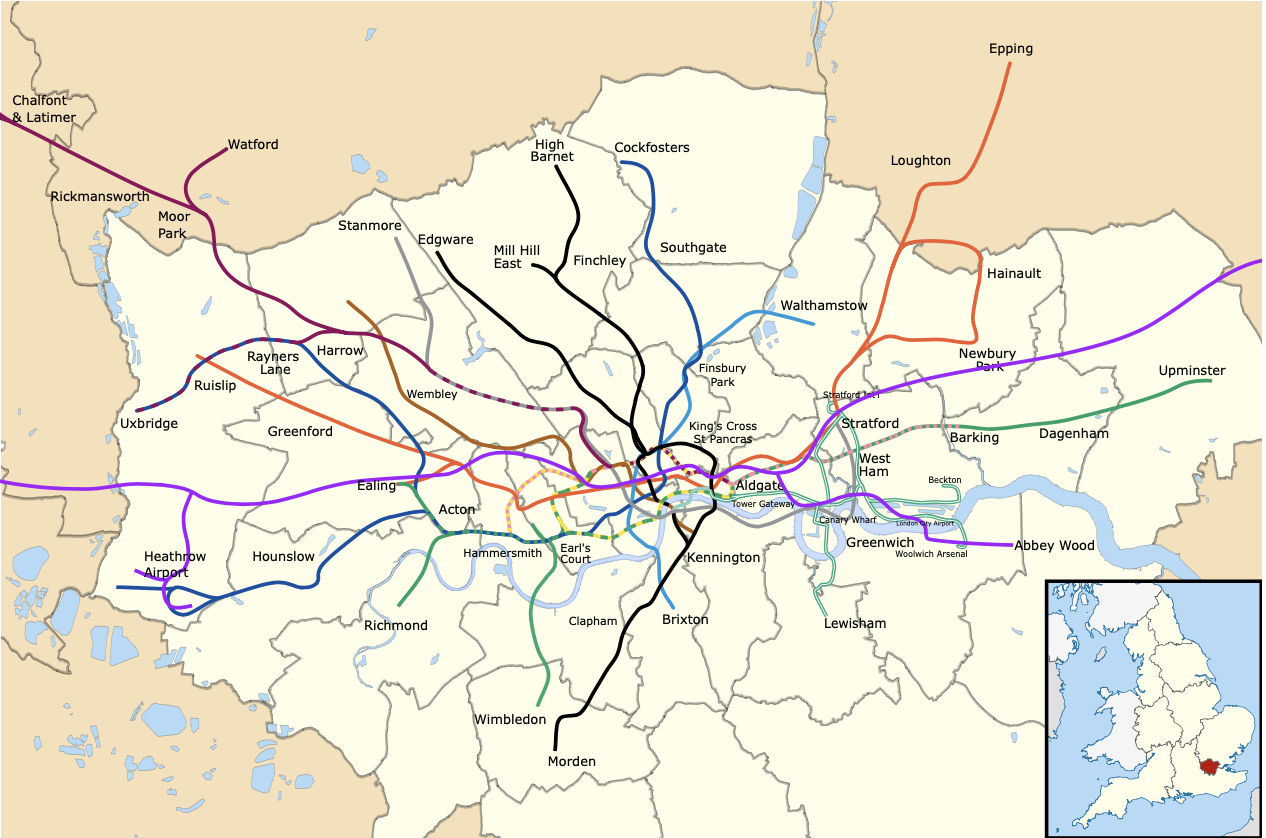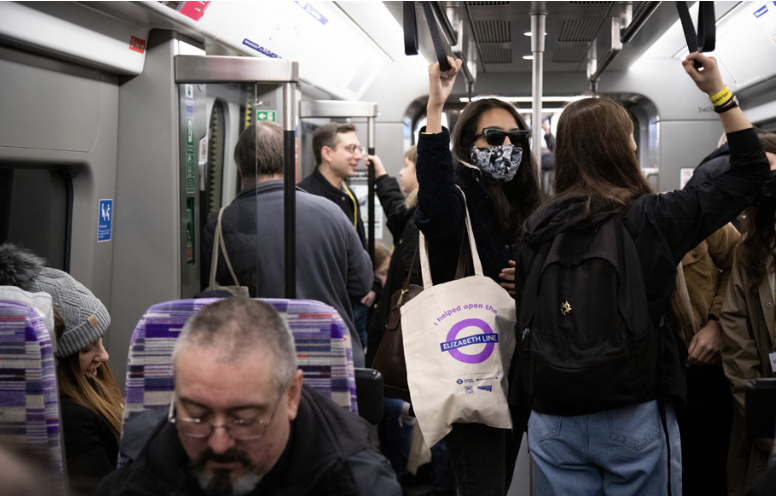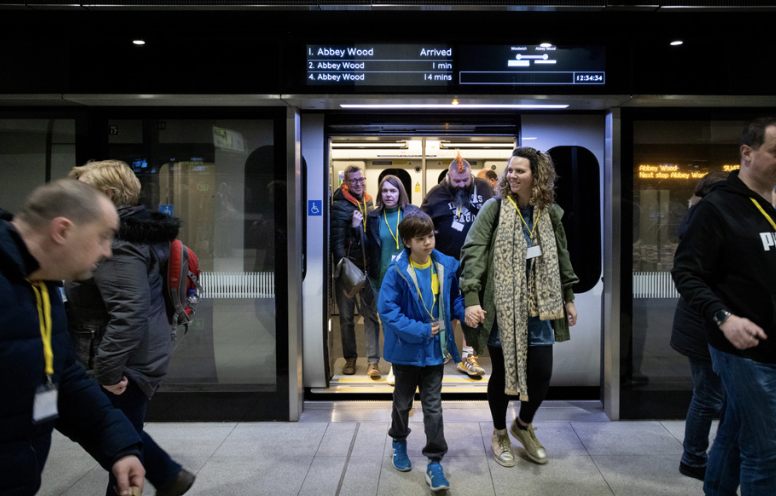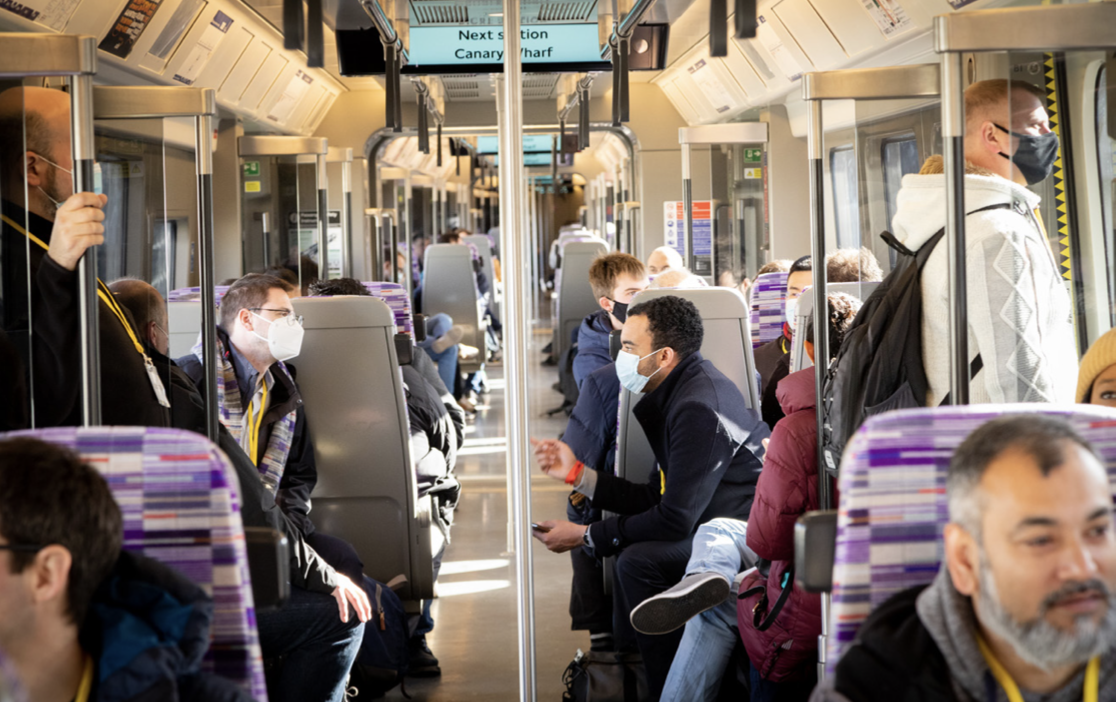TAPAS.network | 16 May 2022 | Examining Evidence | Elizabeth Line
Elizabeth Line opening will test reality of much changed Crossrail demand patterns
As the long-delayed new East West rail line for London finally opens, it remains to be seen how closely the usage patterns will match the original forecasts, and what the impacts of post Pandemic behavioural change will be. and look at what was expected – and how different the response to the new service might now be

MANY PEOPLE in the transport profession will be keeping a keen eye on how the Elizabeth line passenger numbers pan out as the line’s central tunnelled section finally settles into operation.
Predicting usage for the radical new transport option for London was a challenge even in comparatively settled times when the final plans were signed off two decades ago. Nothing on the scale of the Crossrail project had been attempted in the UK previously, and London’s characteristics made it difficult to read across from cross-city rail projects in other countries.
Crossrail’s own website continues to predict: “An estimated 200 million annual passengers will use the Elizabeth line.” The headline figure has not been changed for over a decade, despite the Covid-19 pandemic turning commuting patterns on their head.
The National Audit Office commented last year: “When the Elizabeth line opens, there will be a railway with all the expected stations and interchanges, and train services to support the benefits set out in the business case in terms of improved capacity and connectivity in London and the South East.
“However, these benefits were based on predicted increases in population and travel demand set in 2011 and 2015, which may be less likely to occur, at least in the short term. Increases in passenger demand have slowed since 2015-16, and the Covid-19 pandemic may have more long-reaching impacts on travel.
“Opening the line and getting passengers to use it is critical to TfL’s financial planning. TfL’s January 2021 scenario planning indicated an 18% drop in demand for rail by 2031, with a potential longer-term revenue risk of around £150m a year if demand for the Elizabeth line grows more slowly than expected.”
The long-delayed start of operation of the new cross-London Elizabeth Line will take place on Tuesday 24 May 2022 with services between Paddington and Abbey Wood. TfL Rail services from Reading and Heathrow to Paddington mainline, and Shenfield to Liverpool Street mainline will be rebranded to the Elizabeth line on this day. Bond Street will not open in line with the rest of the central London stations and is expected to do so three months later.
Developed as the CrossRail project, The Elizabeth line is expected to transform travel across London and the South East by dramatically improving connectivity, cutting journey times, providing additional capacity, and transforming accessibility with spacious new stations and walk-through trains.
Opening of the new line is seen as a significant element to London’s recovery from the pandemic, but likely to play a rather different role from the forecasts behind the original CrossRail plan now nearly 20 years old, and even from the originally intended pre-pandemic opening date of December 2018. It was conceived as providing new fast journey options for both commuters and shoppers and leisure travellers into central London, supporting regeneration in newly connected parts of the capital, and adding an estimated £42bn to the UK economy. But both work and shopping behaviour have been much changed by the Pandemic, and there is speculation that travel patterns could now be significantly different from those originally forecast.
Capacity of the peak time service from Paddington to Whitechapel will be 24 trains per hour when the Elizabeth line is fully open. But how will they be used - and will that be justified?
Starting Tuesday 24 May 2022, the Elizabeth line will operate 12 trains per hour between Paddington and Abbey Wood, Monday to Saturday from 06:30 to 23:00.
With earlier post war plans for something similar for London to the RER lines in Paris that first opened in 1977, Crossrail construction finally began in May 2009 after 35 years of planning, development, reviews and postponement.
The official known cost so far has topped £18.6bn., a figure revealed when the 2020 £825m bailout was confirmed to complete the project, though the latest estimate on a further funding shortfall is £174m. Before that it was revealed at the end of 2018 that Crossrail was already set to cost up to an additional £2bn over then then expected figure of £15.4 bn.


Pre-opening operations have been undertaken with volunteers to test systems and emergency procedures

The Elizabeth line is the most significant addition to London’s transport network in a generation. As with the North-South options opened up by Thameslink, and the Jubilee Line’s penetration into Docklands and East London, the new railway is set to transform life and travel in London and the South East.
The Elizabeth line will initially operate as three separate railways, with services from Reading, Heathrow and Shenfield connecting with the central tunnels from autumn this year. All services between Reading and Heathrow to Paddington and Shenfield to Liverpool Street, currently operating as TfL Rail, will be rebranded to the Elizabeth line.
In 2015, Paddington was forecast to have the highest number of passengers entering the Elizabeth line in the morning peak, 07.00 to 10.00, by 2026. The total of 21,850 entries included passengers using the line’s interchange with the Network Rail station. The busiest destinations in the morning peak on the Elizabeth Line were expected to be Tottenham Court Road and Canary Wharf, both with more than 20,000 exits between 07.00 and 10.00.
Paddington was also expected to be a major commuting destination for the new railway, perhaps reflecting the area’s dramatically improved accessibility for residents of East London and beyond. Overall, Paddington was forecast to be the line’s busiest station in the morning peak, with 33,700 entries and exits combined.
It has already been reported that London’s rail commuter market, in particular, has suffered from the change in working routines, with a relatively high proportion of London employment lending itself to working from home. On the other hand, the Elizabeth line’s magnetism is so large that it could stimulate significant new commuting by rail across the region, taking into account its interchanges with rail arteries such as the Great Western and Great Eastern main lines. The Thameslink interchange at Farringdon will connect the new line to many places north and south of the Thames.
The generous sizes of the trains and stations could be another plus for the Elizabeth line - and not just for capacity reasons. People now value personal space more highly than they did before the pandemic, and it could benefit the Elizabeth line if London commuting evolves in a less “peaky” format over the coming years. An even distribution of passengers across the day would be ideal, since it would prevent crowding becoming a deterrent at certain times.
Interestingly, the experience in cities such as Munich that developed a mini-Crossrail – and even with Thameslink – is that the forecasting focus was on trips to the central city area. What was generally underestimated was entirely new cross-city trips that were stimulated by the new line. It was as though many people’s mental maps expanded, opening up entirely new opportunities.
It might, however, take years for ideas of where people can now choose to live and still reach workplaces and colleges, opportunities for new development and repurposing of old buildings, and thoughts about days out for leisure purposes into London’s hinterland fully work their way into fruition.
The Elizabeth line is certainly no one-trick pony. It was always intended to help people go shopping, sightseeing or on nights out, and for a multitude of other journey purposes. Rail has actually been performing strongly in this arena of activity since the harshest Covid-19 restrictions were eased, with leisure demand reported in March to be exceeding pre-pandemic levels - and boosting weekend traffic to above weekday levels.
To what extent could leisure travel, in spite of the growing shortage of disposable income as price increases bite, compensate for lower commuting than expected? A 2014 study by Arup provides food for thought. It explored the impact of Crossrail on Central London visitor numbers, and forecast that the combined demand at Bond Street, Tottenham Court Road and Farringdon stations by 2026 would be three times greater than was being projected at the time.
The caveat to the study may appear somewhat prescient, now that the line is on the verge of opening: “Actual demand for Crossrail and for Central London stations is likely to be different from the projections shown, because events and circumstances frequently do not occur as expected.”
As recently as last year, anyone engaged in revising rail passenger forecasts – perhaps building a tentative model of how the UK would emerge from the pandemic – could not have factored in the events and circumstances which have arisen in the first few months of 2022.
The principles of transport planning have long embraced both the ideas of catering for demand and stimulating it. Cautious public sector finance has never been an easy source for radical new transport concepts where firm figures are wanted to justify ‘grand designs’. Crossrail could have only gone ahead in a climate of growing demand and pressure on the existing system. But now it has been built, it’s there to be used by anyone for any purpose. “Build it and they will come” could never have been the business case. But it has been built, and so we shall now see if they do come....and where they go.

Rhodri Clark is a specialist transport writer based in North Wales. He has been contributing to Local Transport Today magazine since the 1990s, primarily on Welsh subjects. He appears on Welsh radio and TV to comment on transport issues.
Peter Stonham is the Editorial Director of TAPAS Network

You are currently viewing this page as TAPAS Taster user.
To read and make comments on this article you need to register for free as TAPAS Select user and log in.

Log in